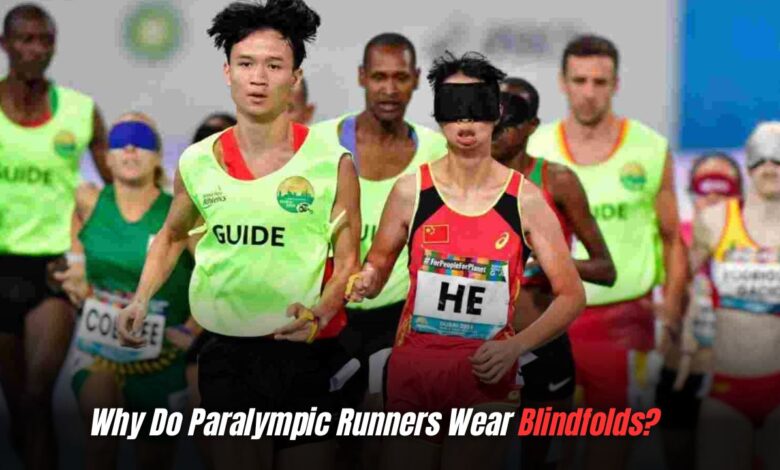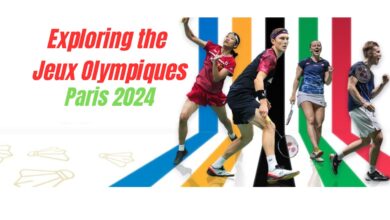Why Do Paralympic Runners Wear Blindfolds? And Do Their Guides Get a Medal?

In the world of Paralympic sports, the sight of runners wearing blindfolds might raise questions for many spectators. This intriguing practice plays a critical role in the Paralympic Games, particularly in events involving visually impaired athletes. The reasons behind this, and the role of the guides accompanying these runners, are central to understanding the unique dynamics of Paralympic competitions.
Understanding the Role of Blindfolds in Paralympic Running
Blindfolds are a common sight in Paralympic running events, especially in track disciplines such as the 100m, 200m, 400m, and longer-distance races. But why do Paralympic runners wear blindfolds? The answer lies in ensuring fairness and equity in competition.
Equalizing the Playing Field: The Need for Blindfolds
In Paralympic athletics, athletes with varying degrees of visual impairment compete. To create a level playing field, the rules require that all runners in certain categories (T11 classification, for instance) wear blindfolds. This ensures that athletes who are completely blind do not face an unfair disadvantage compared to those with partial sight. The blindfolds effectively eliminate any residual vision, making the competition fair for all participants.
These blindfolds are carefully designed to be comfortable and secure, allowing athletes to run at their best without distraction. They are often padded and made from soft materials to prevent chafing or discomfort during high-intensity efforts.
The Role of Guides in Paralympic Running
While the blindfolds ensure fairness, the guides play a vital role in helping visually impaired runners navigate the track. These guides, often referred to as sighted guides or guide runners, are trained to run alongside the athlete, providing both physical and psychological support throughout the race.
How Guides Assist Athletes on the Track
Guides are connected to the athlete by a tether, which is usually a small rope or band held in each runner’s hand. This tether serves as a crucial communication tool, allowing the guide to convey directional cues and adjust the runner’s pace or alignment on the track. The guide’s primary job is to ensure the athlete remains on course, avoids collisions, and maintains optimal speed.
Additionally, guides must be in excellent physical condition, capable of running at or above the athlete’s pace. They provide verbal cues to help navigate turns, changes in terrain, and any potential hazards. It is a unique partnership that requires immense trust and synchronization, often resulting in years of training together to develop a seamless connection.
Do Guides Receive Medals?
One of the most frequently asked questions is whether these guides are awarded medals when their athletes succeed. In the Paralympic Games, guides are indeed recognized for their efforts. If the athlete they are assisting wins a medal, the guide also receives the same medal. This acknowledgment is essential, as the guide’s performance directly impacts the athlete’s results.
The Importance of Recognizing Guides in the Paralympics
The decision to award guides medals reflects the Paralympic Committee’s recognition of the crucial role they play. Without their assistance, visually impaired athletes would face insurmountable challenges in competing at the highest levels. This recognition serves to highlight the unique nature of Paralympic competition, where teamwork between athlete and guide is fundamental to success.
The Challenges Faced by Paralympic Runners and Their Guides
Competing in the Paralympics as a visually impaired runner or guide presents unique challenges beyond the physical demands of running itself. The constant communication and trust required between runner and guide create an intense dynamic that must be meticulously managed.
Building Trust: The Core of the Athlete-Guide Relationship
For an athlete and their guide, trust is the cornerstone of their partnership. Both parties must be confident in their shared ability to communicate effectively, make split-second decisions, and maintain a synchronized rhythm throughout the race. Training often involves not just running but also drills that enhance communication, reaction times, and understanding of each other’s movements. This preparation is crucial for ensuring both athlete and guide perform at their best on race day.
Physical and Psychological Demands on Guides
Guides face substantial physical and psychological demands. They must be in peak physical condition, capable of sustaining high speeds for the entirety of the race while simultaneously monitoring the athlete’s performance, communicating instructions, and adjusting their own movements to maintain synchronization. The guide’s role is not just to run but to be a constant source of motivation, reassurance, and strategy.
Technology and Innovation in Paralympic Running
Technological advances have also played a significant role in enhancing the performance of Paralympic athletes and their guides. From improved materials for blindfolds to better communication devices, innovation continues to shape the future of Paralympic sports.
Enhanced Equipment for Optimal Performance
Blindfolds have evolved from simple fabric bands to ergonomically designed gear that minimizes discomfort and distraction. Similarly, tethers used by guides and athletes are designed to be lightweight, durable, and easily adjustable, reducing the risk of tangling or breaking during a race. These improvements contribute to faster race times and a better overall experience for both athletes and their guides.
Innovative Training Methods
Training methods have also adapted to maximize the performance of visually impaired runners and their guides. Advanced simulation techniques, including virtual reality, are now being used to recreate race conditions and help both the athlete and the guide prepare for various scenarios they might encounter during a competition.
Conclusion: Celebrating the Spirit of Paralympic Running
Paralympic runners and their guides epitomize the spirit of teamwork, resilience, and determination. The use of blindfolds ensures a fair competition, while the guides provide indispensable support that makes such events possible. As we watch these athletes compete, it’s essential to recognize the unique challenges they face and the incredible partnerships that make their achievements possible. The awarding of medals to both athletes and their guides is a testament to the value of collaboration in the face of adversity.




